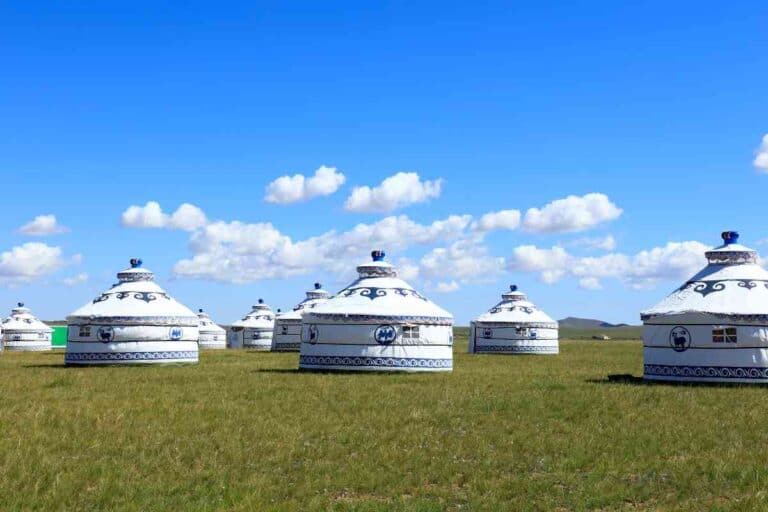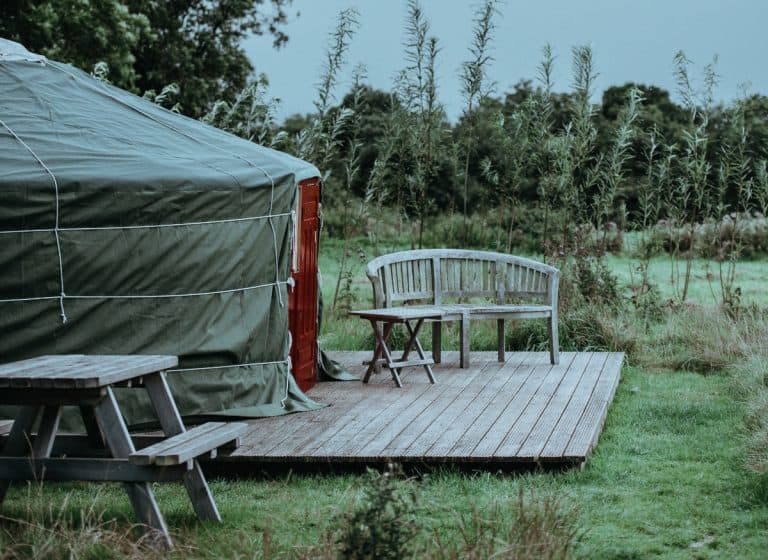Cooking in a Yurt: Tips for Managing Humidity and Smoke
Many people think that cooking in a yurt is unsafe or impractical. Yurts are typically used for temporary living spaces, so they often don’t have the same amenities as other homes do. However, with a little preparation and thoughtfulness, you can easily cook in a yurt.
The main challenges when cooking in a yurt is humidity and smoke management. Many yurts don’t have exhaust vents, so you will need to be very conscious of how much water vapor is in the air. Cooking on an open flame or frying food can also make smoke management a consideration.
It’s important to be mindful of all these challenges before deciding what kind of cooking techniques to use, so let’s dig a little deeper.
Managing Humidity Caused By Cooking
As you may know, cooking food releases vapor into the air. In a yurt without vents, this can cause humidity to rise and cause condensation.
It’s particularly important to keep humidity levels down in a yurt as the fabric covers will otherwise be very susceptible to mold and mildew. While you can usually remove surface-level mildew from drywall and then paint the previously affected area over, this is not possible with fabric. You can kill all the spores with chlorine bleach or hydrogen peroxide, but most of those ugly black spots will often remain, regardless of how much you scrub.
Humidity is effectively managed by sufficient ventilation which pulls out the humid air and draws in fresh air. Here are four very effective ways this can be done:
- Open the top dome/skylight. Humid air is less dense than dry air, meaning it will rise to the top and out of the yurt through the opening.
- Opening windows close to your cooking area will also help manage humidity levels, provided there is a little wind or a fan is running. Make sure to open two windows for effective airflow.
- A quality dehumidifier can pull a lot of moisture out of the air. This is a good solution when it’s too cold to open the dome or windows. Most dehumidifiers automatically turn on when the moisture level gets too high.
- Install a kitchen extractor fan. If your yurt is intended as a permanent living space, it may be well worth it to set up an extractor fan. They are affordable and will solve the issue once and for all.
How do you know if there is too much moisture in the yurt?
There are several clear signs of humidity issues, such as surfaces feeling damp and cold to the touch – particularly the outer walls. Condensation on the inside of the dome is also a sign of too much moisture in the air. A moldy smell in the yurt, especially overnight and first thing in the morning, or even mold or mildew stains on the walls means your yurt has had humidity issues for an extended period.
Any of these signs means you need to act fast!
An easy way to prevent these problems in the first place is to install a hygrometer – a device that displays both the current and maximum humidity. This way, you will know when to air out before it becomes an issue.
Smoke and Gas Safety
Another thing to be mindful of is smoke. Inhaling too much smoke is toxic to humans and pets and can lead to serious health issues. Smoke is a mixture of gases and includes carbon dioxide, water vapor, particulate matter (soot), as well as other chemicals. Even in small concentrations, this can be hazardous to your health.
The best way to evade this issue is by avoiding open flames entirely by using electric cooking appliances. But this can be a difficult task since many yurts don’t have direct access to electricity.
If you prefer to cook in a yurt with open flames, you have several options that all require some caution and preparation:
A wood stove is great for cooking inside a yurt. The pipe will pull the smoke outside, so you won’t have to worry about it accumulating indoor. I’m particularly fond of the Fltom Camp Tent Stove. It feels solid, quickly reaches the right temperature, and can be used for cooking dishes just like on my kitchen range at home.
Butane and propane stoves can be used indoor if you take the right precautions. These gas stoves burn clean and emit very little smoke under the right conditions, but there is the risk of a gas leak. Always make sure that there is sufficient oxygen for a clean burn and that butane or propane appliances are rated for indoor use. Also, check that all connections are tightly sealed and that there are no cracks in the gas hoses before use.
If you need a smaller setup, alcohol burners are also a great option. Alcohol burns very clean and there is no risk of a gas leak. They are also very affordable and quick to set up. However, alcohol burners can’t be left on unattended and require some caution.
If you are going to use a wood or gas stove, consider getting a smoke detector and a carbon monoxide detector that will alert you if the stove or pipe is leaking. Carbon monoxide is odorless and colorless and a serious health hazard if inhaled. Carbon monoxide detectors are inexpensive and can be found at any hardware store or online retailer.
Getting a Kitchen in a Yurt
If your yurt is intended as a permanent construction, then you may want to install a real kitchen. This does involve getting plumbing and electricity to the yurt, which is not an insignificant task but it will make cooking just as easy and enjoyable as in a traditional house.
You may also want to consider a camp stove or even a Tangia cookset for a very lightweight solution. Camp stoves are more portable than installing an entire kitchen in the yurt and can be kept in a backpack. It is possible to cook great food with any type of equipment but remember to take safety precautions and take care not to have any open flames near your walls.
If you are going to cook in the yurt on a temporary or on a semi-permanent basis (i.e., for an event), consider getting one of those portable camp kitchens with all the components. You’ll save money and effort compared to a real kitchen yet have a very functional, albeit slightly primitive kitchen.
I hope this post has given you some ideas for cooking in a yurt! The key is to consider your particular needs and plan ahead if you want to be able to enjoy your yurt as much as possible and as safely as possibly.





![Are Yurts Good For Hot Weather? [4 Tips To Stay Cool!]](https://freedomresidence.com/wp-content/uploads/2022/05/Can-You-Live-in-a-Yurt-Year-Round-2-768x512.jpg)
![Can You Live In A Yurt Year-Round? [4 Things To Consider!]](https://freedomresidence.com/wp-content/uploads/2022/05/Can-You-Live-in-a-Yurt-Year-Round-1-768x512.jpg)